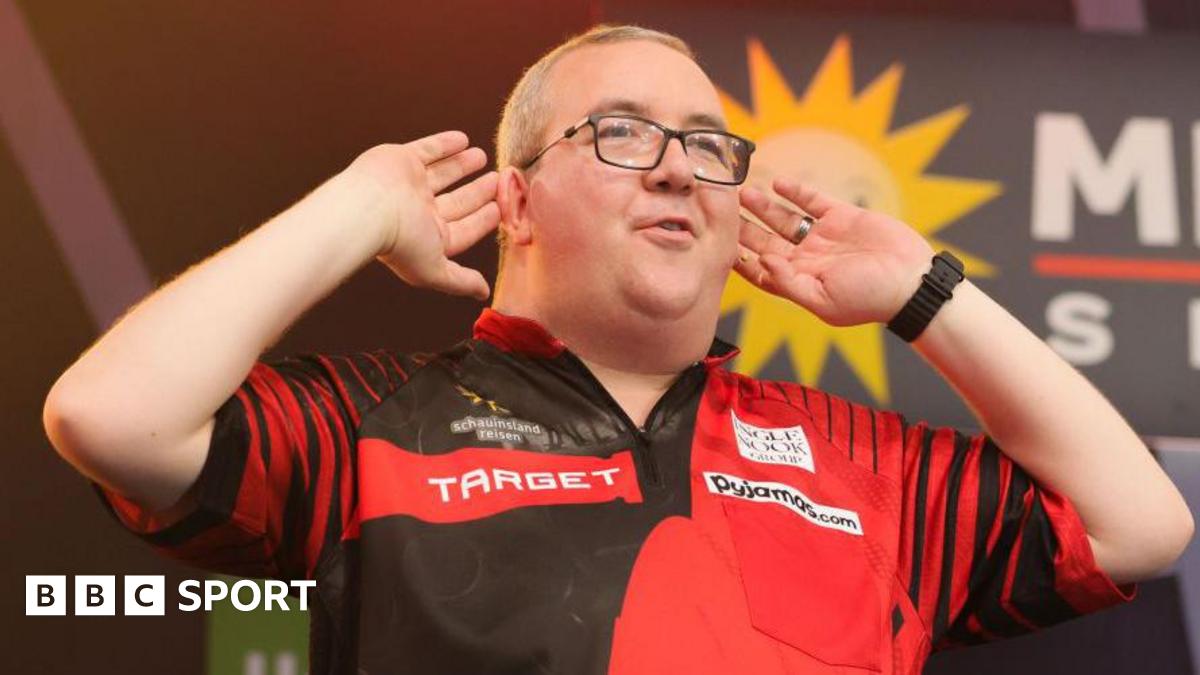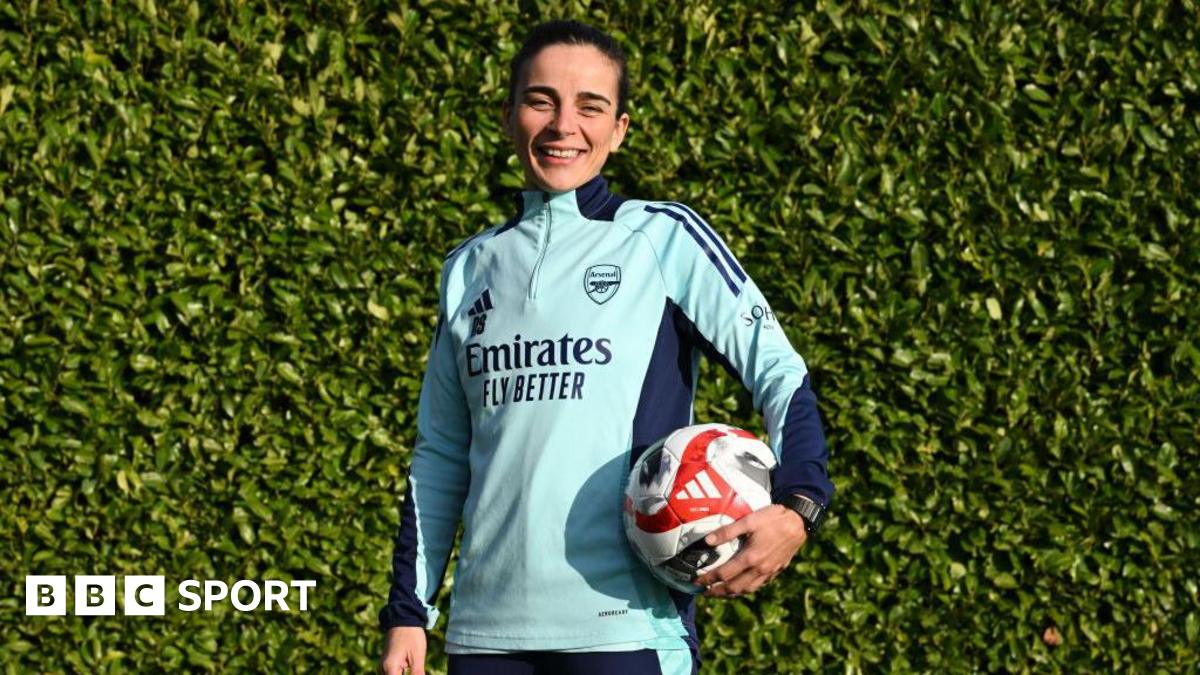ARTICLE AD BOX

Ninad Barbadikar
Football tactics writer
Liverpool's transition from Jurgen Klopp to Arne Slot could barely have felt more seamless.
Since swapping the German's 'heavy metal football' for an apparently more measured approach, the Reds have won 19 out of their 23 games across all competitions, losing just once.
But how has Slot actually managed it? What has he changed? And what problems could lie ahead?
BBC Sport takes a closer look at the tactical tweaks Liverpool have made this season.
A hint of De Zerbi in Slot's Liverpool?
In his first few interviews with the media, Slot spoke about how both Klopp and Pep Guardiola had influenced his ideas about football. However, it is clear to see that former Brighton boss Roberto de Zerbi has also had an impact.
De Zerbi's teams became famous for their way of playing through the opposition press, by asking their goalkeeper or central defenders to hold on to the ball and wait for their opponents to close them down before releasing a pass.
It is a risky approach, but one which is made easier with the skills of modern keepers like Alisson and Caoimhin Kelleher.
There is a great deal of patience required on the part of the centre-backs too and, in Virgil van Dijk and Ibrahima Konate, Slot has two defenders who are comfortable on the ball and more than up for the challenge.
Image source, Premier League
Image caption,This kind of approach on the ball deeper in their own half has seen plenty of benefits already for Liverpool
After 15 games in the league, the numbers show that Liverpool are looking to circulate the ball more in their own defensive third.
Last season, the Reds averaged 117.2 passes per game in their defensive third according to Opta, whereas this term that figure has gone up to 133 passes. A small tweak and Liverpool look all the better for it.
Slot's team are also attempting fewer shots in each match, down to 15.2 from 20.6 last season, which is perhaps another by-product of introducing a bit more control and conservatism into the system.
All of this is not to say that Liverpool do not still rely on transitions and a direct attack-led approach. Rather, the way they manufacture these advantageous scenarios for themselves has changed.
How has Slot built on Klopp's approach?
Teams at the elite level these days typically set up in a 4-2-4 shape without the ball and this is something Slot has carried on from Klopp's style last season.
Once again, though, this change has come with a more measured approach.
In practice, Liverpool's 4-2-4 block is one that focuses on retaining structure and using that as a means of blocking favourable passing lanes to the opposition, rather than constantly pressing high to win the ball back.
Image source, Premier League
Image caption,Liverpool's 4-2-4 shape under Slot provides coverage across the front and sets them up to take advantage of lapses from the opposition
The number 10 moves up and joins the front line, which forces the opposition into doing one of two things: either play the ball long and risk turning over possession, or play the ball into the wide channels where Liverpool are comfortable pressing and winning the ball back.
However, a lack of proactivity in this approach has been exploited by teams already in the Premier League, with Arsenal and Chelsea both finding ways to bypass Liverpool's front line of four and progress the ball further up the pitch centrally.
Slot is aware of this issue and, for now, seems to be content with the way Liverpool's defence has dealt with the flaws.
"We want to have control of the game, we want to be very aggressive without the ball," he said before the Champions League tie against Bayer Leverkusen.
"Maybe if we are not as aggressive then we are sometimes a bit too high. We still want to try, but if you're just a fraction too late or open a certain lane, then they can play through you.
"The good thing is I always see my players running back really hard to prevent the other team from getting a chance."
Image source, Premier League
Image caption,Liverpool's approach comes with flaws that still need to be ironed out - as shown above, where Arsenal winger Leandro Trossard dropped deep to aid goalkeeper David Raya in bypassing the press
One of the advanced metrics on which Liverpool have dropped off is PPDA (opponent passes allowed per defensive action), which shows a relaxation in the intensity of their press.
Last season, they were second in the league averaging 8.9 per game, which has risen to 10.8 this season. This means they are allowing at least two more passes from the opposition before engaging in defensive duties.
Looking at high turnovers, Liverpool ranked third last season with 392 across 38 games. So far, they have accumulated 127 and rank seventh in the league for the metric.
Another interesting decline is that of dribbles challenged - how many times they tackle an opposition player who is dribbling. According to FBref, the Reds averaged a league-high 20.2 per game last season but that has gone down to 17.6.
Slot wants Liverpool's players to operate higher up the pitch but without the manic aggression shown by Klopp teams of the past. Instead, it is about picking and choosing their moments to spring on the opposition.
This approach feels more sustainable in the medium-to-long term, too, meaning we are less likely to see the kind of drop-off that saw them fall out of the 2023-24 title race in the latter stages.
Which roles have changed in this 'new' Liverpool?
Gravenberch as a 'number six'
Slot's teams have been known to set up in a 4-2-3-1 formation on the pitch, which is a move away from Klopp's favoured 4-3-3.
This change in system meant a new role for Netherlands midfielder Ryan Gravenberch, who now finds himself dictating affairs from the middle of the park having been asked to play higher as a 'number eight' under Klopp.
Gravenberch brings a number of strengths to the table - press-resistance, awareness of space around him both in and out of possession and a passing ability which helps connect defence and attack.
His move into the 'number six' role has meant Slot has been able to use Alexis Mac Allister further up the pitch in possession. In fact, Gravenberch's role in Liverpool's side this term mirrors the Argentine's role from last season.
Moving Gravenberch further back has meant he has the space to both receive and turn away from markers. His progressive carries can be of huge help to Liverpool in getting up the pitch.
However, the 22-year-old is still learning the role and has been stifled at times when pressed high by opponents - such as in the 3-3 draw at Newcastle - which can hit Liverpool's ability to build up.
Back to basics for Alexander-Arnold
After stepping into midfield for both club and country last season, Trent Alexander-Arnold has been playing more as a 'traditional' right-back under Slot.
While this has provided more defensive stability, he has still been able to make the best of his passing talents from those deeper areas - specifically when Liverpool are trying to build out from the back or move the ball from defence to attack.
Trent Alexander-Arnold is playing a more 'traditional' role this season rather than inverting into midfield - as his pass map against Bournemouth shows
However, Slot has also given Alexander-Arnold licence to operate more centrally in some of the Reds' matches.
Against Manchester City, for example, the 26-year-old enjoyed plenty of space in the Liverpool half to play long-ranging passes to his attackers.
Not only that, when Alexander-Arnold does move into more central zones it creates one v one opportunities for Salah, while also containing any potential counter-attacking threat down the middle.
Although his role has been simplified, Alexander-Arnold is still making a big difference.
Salah the main man again
With 22 goals and assists to his name thus far in the top flight, Mohamed Salah has started the season like he means business.
According to Opta, Salah leads Liverpool for:
Shots from open play per 90 - 3.15
Non-penalty expected goals per 90 (npxG) - 0.54
Shots on target per 90 - 1.76
Salah's numbers have been strong throughout his career, but this season Slot's tactical tweaks have helped leave him isolated against his marker more often.
This has a lot to do with Alexander-Arnold's role as well - either overlapping Salah to create space for the Egyptian to cut inside for a cross or shot, or inverting to pull defenders away from Salah and give him room to drive at his opponent.
With nine assists in the league already, Salah is just four short of his best full-season tally for Liverpool (13 in 2021-22) - proving his worth as a creator as much as a goalscorer.
In one-on-one duels, Salah will more often than not have the upper hand, and by putting him in such scenarios Liverpool are able to get more offensive output from their star player.
All in all, Liverpool and Slot are in a very strong place to capitalise on the weaknesses shown by Manchester City and Arsenal this term.
Introducing more control into the approach and repurposing players according to their strengths has worked marvels for the Dutch tactician.
There is room for improvement, but much to be pleased with already for Liverpool fans.

 1 month ago
8
1 month ago
8








 English (US) ·
English (US) ·